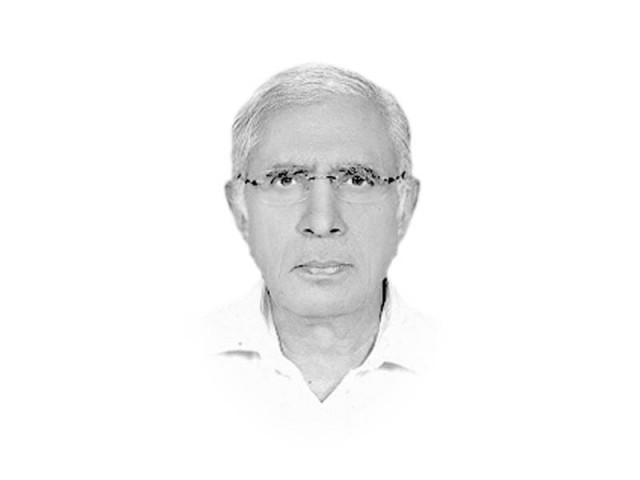Trading out of trouble
IMF has raised concerns about further loss of Pakistan’s export competitiveness

The writer served as Executive Editor of The Express Tribune from 2009 to 2014
Despite a hefty fall in world oil prices in recent times, Pakistan continues to suffer from an expanding trade deficit because its exports earnings are going south rather continuously. After having remained stagnant at $24-25 billion for the last few years, Pakistan’s exports have in recent years started showing a disturbing declining tendency. In 2013, Pakistan exported goods worth a little over $25 billion while in the following year they fell by nearly five per cent to a little over $23 billion. And during the first half of the current fiscal year, export earnings were off by about $2 billion against $12 billion in the same period last year.
In its recent report under the ninth review of Pakistan’s economy, the IMF has raised concerns about further loss of Pakistan’s export competitiveness, stating that exports and consequently growth would be adversely affected further if “Pakistan falls behind competitors in securing favourable treatment in major markets”.
According to the IMF, exports declined in the first quarter owing to falling cotton prices and real exchange rate appreciation. In the Fund’s estimation, Pakistan’s export competitiveness also suffered from structural factors, such as security concerns, power outages and an unfavourable business climate, as well as from significant real exchange rate appreciation over the past two years.
The problem of exchange rate appreciation was also highlighted by former finance minister and renowned economist, Dr Hafeez Pasha who opined that it was not possible to compete in the European market when your currency is 16 per cent stronger than those of the competitors. According to Dr Pasha, depreciation of the Pakistani rupee was important to increase exports to the leading markets of the world.
According to a UN study covering a 30-year period (1980-2011), India’s share of world exports improved from 0.43 per cent to 1.7 per cent; Bangladesh’s from 0.04 per cent to 0.14 per cent; Malaysia’s from 0.74 per cent to 1.34 per cent and Thailand’s from 0.37 per cent to 1.35 per cent. Pakistan’s share, however, remained stagnant at 0.15 per cent.
In 2013, the European Union (EU) granted GSP Plus status to Pakistan till 2017, which enabled it to export 20 per cent of its goods with zero tariff and 70 per cent at preferential rates to the EU market. As a result, Pakistan’s exports to Europe spiked by 21 per cent, but this was at the cost of other markets.
Pakistan’s export base and markets are extremely narrow. Its exports continue to be dominated by cotton textiles and apparel; imports include petroleum and petroleum products, edible oil, chemicals, fertiliser, capital goods, industrial raw materials and consumer products. Over 55 per cent of its export earnings are contributed by the cotton group alone. Relatively low value-added products like leather, synthetic made-ups and rice contribute about 14 per cent of total exports.
Pakistan is a member of the WTO and has bilateral and multilateral trade agreements with many nations and international organisations. It is part of the South Asian Free Trade Area agreement and the China-Pakistan Free Trade Agreement. It is the 89th most complex economy according to the Economic Complexity Index. Its top export destinations are the US, China, Afghanistan, the UAE and Germany. The top import origins are the UAE, China, Saudi Arabia, Kuwait and India. Around 50 per cent of Pakistan imports originate from just a few countries like China, Kuwait, Saudi Arabia, the UAE, India and Indonesia.
So, in order for Pakistan to get rid of the export stagnation mode, it urgently needs to come up with a long-term export strategy, based on a rational exchange rate policy, diversification of the export base and markets, and a drastic reduction in power outages. The list of its export items, as well as its market destinations have remained the same over the last 50 years. This needs to be drastically overhauled through product innovation and creative market exploration.
Published in The Express Tribune, January 16th, 2016.
Like Opinion & Editorial on Facebook, follow @ETOpEd on Twitter to receive all updates on all our daily pieces.
















COMMENTS
Comments are moderated and generally will be posted if they are on-topic and not abusive.
For more information, please see our Comments FAQ